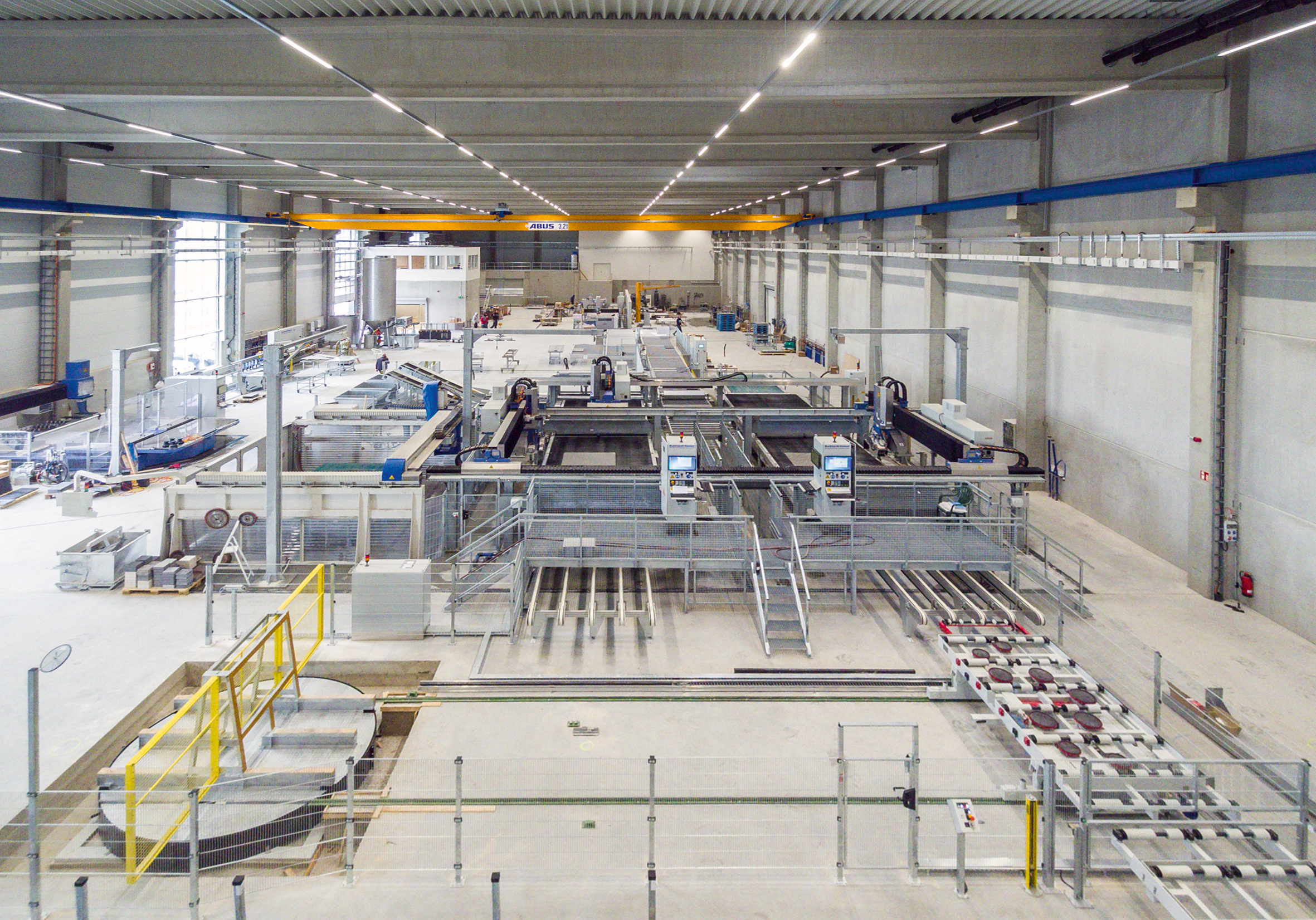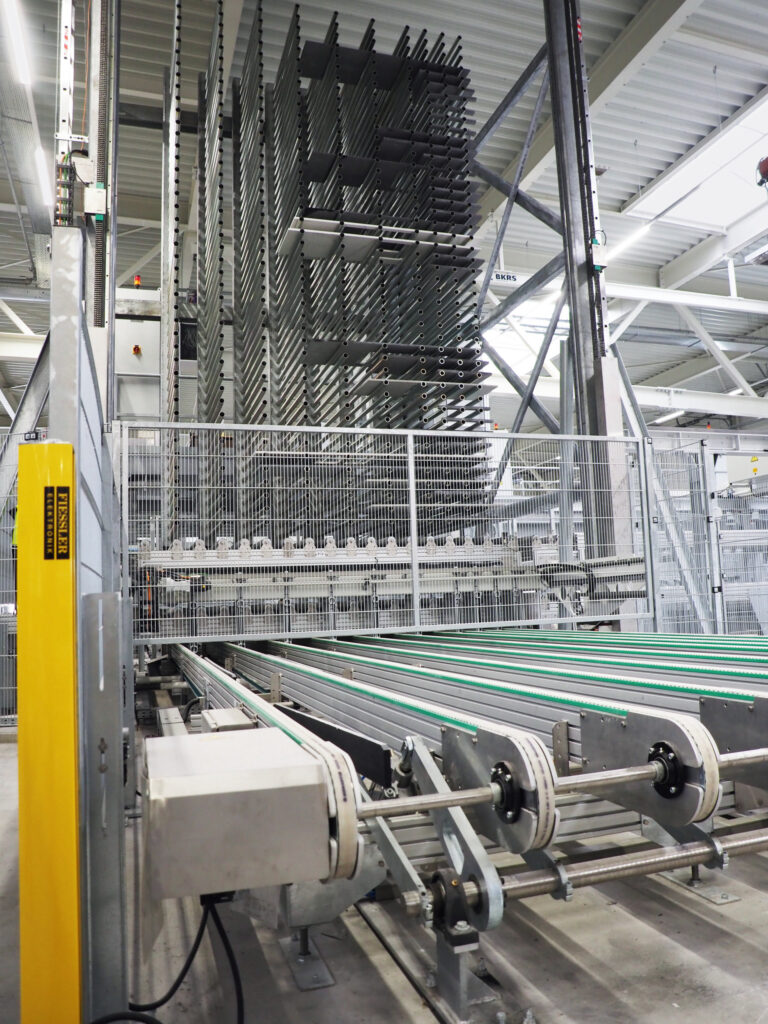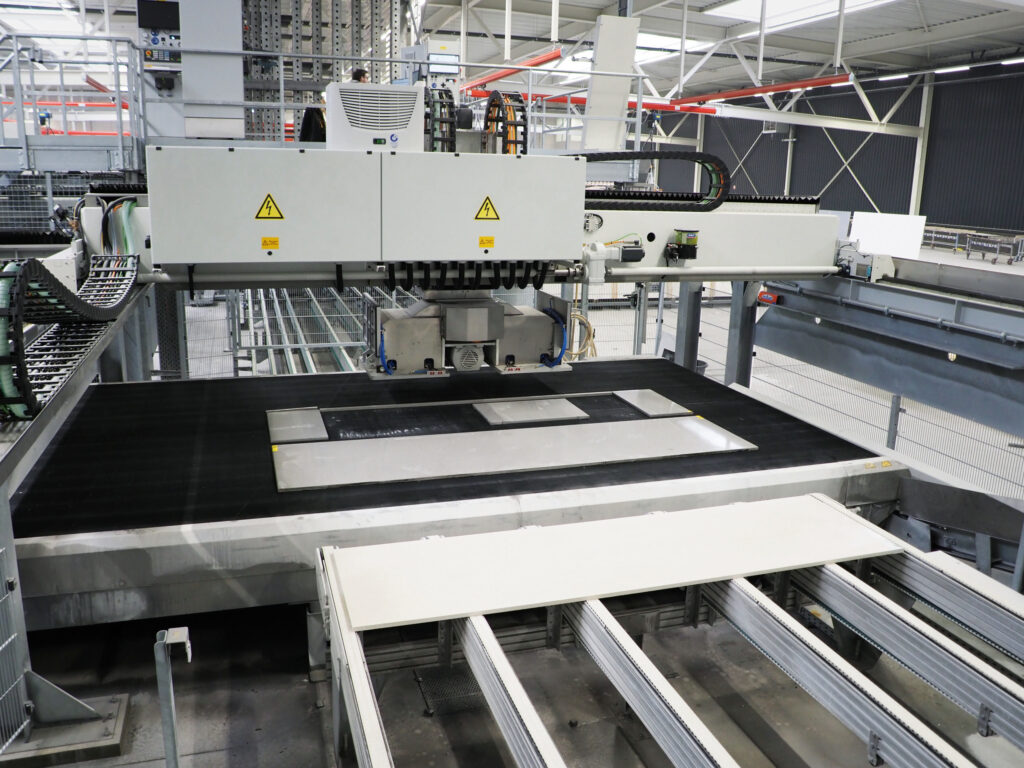
COMPANY CB-TEC
Everything revolves around the rotary head saw
The trade magazine STEIN reports in a detailed article about the realization of our customer project at CB-tec.
Rotary head saws and integration into automated processes
CNC-controlled bridge saws, usually equipped with a rotary head and five interpolating axes as well as vacuum suction cups, are state of the art today - as stand-alone machines, but increasingly also integrated into production systems that manufacture large numbers of worktops in batch size 1 production. Thanks to additional loading and unloading systems, saw cutting is merging with the other panel processing steps to form an industrial process. We show examples of how modern saws can be perfectly integrated into production.
The technological development of saws with cutting discs has been so rapid in recent years that modern large machines are now fully automatic multi-talents. In STEIN, we have repeatedly presented saws in recent years that can drill, mill, polish, engrave and perform other tasks. On the one hand, this relieves the strain on employees and, on the other, helps to counteract the shortage of skilled workers. The existing staff can concentrate on their core tasks when the machines handle most of the production automatically. In addition, increased production capacities and modern machine technology often make it possible to enter new business areas in the first place. Automated individual machines for medium-sized companies are just as suitable for this as complete production lines for industrialized companies.
From the individual machine to the machine concept
According to Burkhardt-Löffler, when integrating sawing systems into automatic production processes, it is important to integrate the individual machine into the strip production process.According to Burkhardt-Löffler, when integrating sawing systems into automatic production processes, it is important to integrate the individual machine into the strip production process. „Our rotary head saws are therefore equipped with a vacuum suction cup for separating,“ explains Managing Director Dr. Matthias Baumann. By adding additional foldable suction cups and a rotary axis, raw panels can be processed directly from the stationary A-frame: „A specially developed saw band serves as a cutting base, which enables the workpieces to be automatically discharged after the end of the machining process.“
Fully automated production, on the other hand, which Burkhardt-Löffler can also provide, ideally begins with a digitized slab storage system for natural stone, ceramic and engineered stone, as offered by large-scale machine manufacturers such as Breton, Intermac and Burkhardt-Löffler. From here or directly from the A-frame delivery, the individual slabs are transferred as required to a loading unit, which requests the slabs electronically and moves them from vertical to horizontal. Conveyor belts transport the panels to the individual processing machines (CNC saw, water jet system, CNC processing center, edging machine), where vacuum manipulators separate the workpieces. Further conveyor belts link the machines to each other and to one or more buffer stores, which compensate for the different machine production speeds. Robots are also used for loading and unloading the production line; at the Italian company T&D Robotics, they even carry out the individual processing steps. They also saw, mill, drill and cut.
While automatic production lines have mainly been developed for raw panel processing in Germany and neighboring countries in recent years, the company’s Lapisystem series of robots can also be used to automate solid work. Even today, manual intervention in production is still often only required for the final processing steps. Although the increased level of automation also reduces the need for highly qualified employees, these scarce specialists are still indispensable at the gluing workstations for the production of finished workpieces in solid optics.
No automation without computer control
If you want to be on the safe side, you should have at least two machines for each processing step, as otherwise the entire belt production would come to a standstill in the event of a machine breakdown. Double and interchangeable work tables are also helpful for optimum material flow. And the appropriate water treatment systems and automation of waste disposal should not be forgotten when planning. Computer-controlled networking is a must for automated production. According to Steffen Langhans, the production process is typically controlled centrally via a higher-level production planning system. As the second Managing Director of Burkhardt-Löffler explains, the use of workpiece images and clear workpiece identification using barcodes allows customer-specific orders to be produced individually and the end product to be simulated in advance. For more complex work, the machining process can also be simulated in advance, says Langhans.
Automation and digitalization in stone processing began with kitchen worktop production. Nowadays, however, doors, tables, counters, bar counters and much more are also produced in batch size 1 production – which has prompted machine manufacturers to develop ever better networked line concepts, which they have borrowed from other industrial sectors such as glass production and wood processing.



